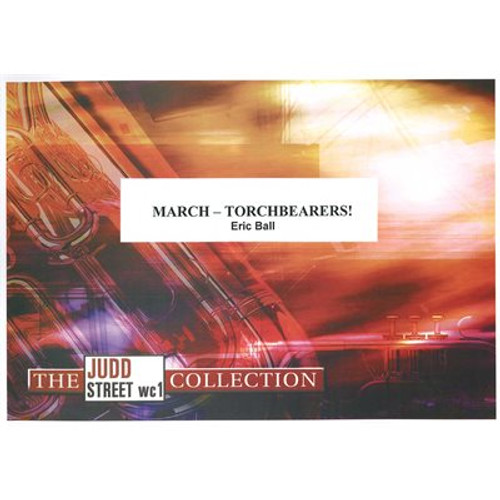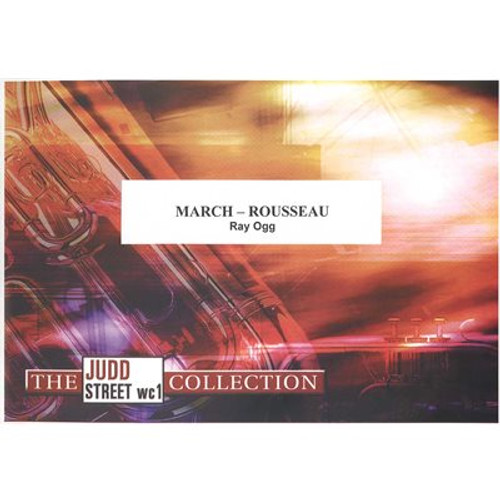Product Description
Comments by Colonel Robert Redhead
This composition was written for the International Staff Band's coast to coast tour of Canada in 1994. The visit was requested to celebrate the 25th Anniversary of the Canadian Staff Band. A highlight of this anniversary year was the Brass Spectacular Festival in Toronto's Roy Thomson Hall featuring the Chicago, New York, Canadian, and International Staff Bands. This music was performed as the ISB's presentation at these two concerts.
The music seeks to explore the remarkable truth that God sees his Church, 'his people', as the body of Christ, Corpus Christi. Paul urges the Christians at Ephesus to 'live a life worthy of the calling you have received' (Ephesians 4:1), reminding them to 'make every effort to keep the unity of the Spirit' (4:3) as they exercise individual gifts, the end product of which is that 'From him (Christ) the whole body, joined and held together by every supporting ligament grows and builds itself up in love, as each part does its work' (4:16). Thus the total is more than the sum of the constituent parts. The band ensemble is used to illustrate this remarkable truth, different 'families' of instruments having opportunity to discover and exercise their gifts. The source of our new life is the breath of God... 'Dry bones, hear the word of the Lord; I will make breath enter you' (Ezekiel 37:5). This is expressed by different sections of the ensemble as they explore the unique characteristics of their gift but also eventually realize the need for Christ to "Bind us together', resulting in the desire to
- Give thanks with a grateful heart,
- Give thanks to the Holy One;
- Give thanks because he's given Jesus Christ, his Son.
- And now let the weak say 'I am strong',
- Let the poor say 'I am rich',
- Because of what the Lord has done for us.
Bars 1-26 represent the presence of the Almighty God in his world and people. Thus the opening chord should reveal the total breadth of sound of the ensemble. The muted Soprano and two muted Solo Cornets in bars 2 and 3 enable the upper end of the chord to diminuendo successfully to pianissimo with the rest of the group. The dynamic should decrease throughout the totality of the chord. The theme in the Solo Horn at bar 4 is developed from the final theme of the composition, the words of which are quoted above. Allow the music 'time' to crescendo to the second total ensemble chord, now on the dominant. This needs to create the same effect as in bars 1-3. The trombone figure in bars 17-18 needs to commence at a higher dynamic than the rest of the diminishing chord, maintaining the sostenuto style. Note that the accents at the end of the demi-semiquaver figures commencing at bar 20 are not to be articulated.
The imagery of the music at bars 27 through to 56 is life being breathed into dead bones. Thus the chordal structure in the accompaniment is not based on a consistent rhythmic pattern. It will, however, take some considerable rehearsal to enable it to feel natural. Note the dynamics, and fully emphasize the contrasts when they occur. Bar 49 onwards uses the cornet family to express the excitement of discovering one's own human abilities and gifts. This needs to exude confidence. Ensure the pizzicato figures in bars 57 to 62 move through the different parts naturally and without intruding on the melody line. Bars 65 through to 71 need to sound as brilliant as possible. Every section must reflect self-confidence and even a little arrogance.
Bars 84-107 feature the tuba family, treating the euphonium as tenor tubas. The essence is quality of sound. The tuba family, particularly in the upper range, can create a wonderful ensemble. Cues have been given, but should only be used if absolutely necessary and remembering that the point of the music is not so much the melodic line and the harmony, but the sound created by the ensemble as a family of instruments. The conductor can be very expressive throughout this passage, as long as the cantabile is maintained. Ensure bars 103-105 are performed molto sostenuto.
Bars 108 onwards feature the trombones. This is a variation on the theme of 'dry bones', again expressing self-confidence as the 'gift' is discovered and enjoyed to the full! It will take good rehearsal to maintain the speed, with musicality, through bars 121-124. Bars 139-144 are a repeat of earlier music, but this time should express arrogance, setting the scene for the individual families of instruments to lose the sense of the ensemble (ie the 'gifts working together for the common good towards a common goal'), creating a sense of mayhem, then panic, and finally, collapse. Bars 164-167 require tremendous precision and power, expressing the same full ensemble sounds as in the 'unity' of the opening chord of the composition but now 'out of control'.
Contrast is a vital ingredient in music and dolce e legato fully expresses the feeling that should be generated following the tumult of the previous section. The words of this gospel chorus read as follows:
- Bind us together, Lord,
- Bind us together with cords that cannot be broken;
- Bind us together, Lord,
- Bind us together, O bind us together in love.
- There is only one God,
- There is only one King,
- There is only one Body for that is why we sing:
- Bind us together, Lord...
Thus the arrogance disappears, the sense of unified purpose is established and the music now moves into its conclusion and completion of the gift fully creating the ensemble. The music develops gradually, concluding with a glorious rendition of Give thanks at bar 250.
At bars 215-225, enable the trombones to develop fully their ensemble potential, following this with the simplicity (Nearly Mozartian in style) of the first statement of the chorus melody. The theme develops strongly into bar 242. However, be careful to allow the ensemble enough reserve to create the glorious statement of the tune at bar 250. the cornet arpeggio work needs to be marcato throughout bars 241-249. The trombone rhythms at bar 250 onwards are not just constant rhythmic patterns. They need to be handled very carefully with malleability by the section, feeling the grandeur and space of the rest of the ensemble.
Bars 258 onwards provide the finale using fragments of earlier statements. Ensure the full tone of the ensemble (as presented in the opening bars) is fully exploited in bars 273, 275, 277 and finally in bar 283. This final chord needs to more than match its counterpart from the opening bar of the composition.
(sample music)
(view series guide)
Produced by The Salvation Army, SP&S, UK













